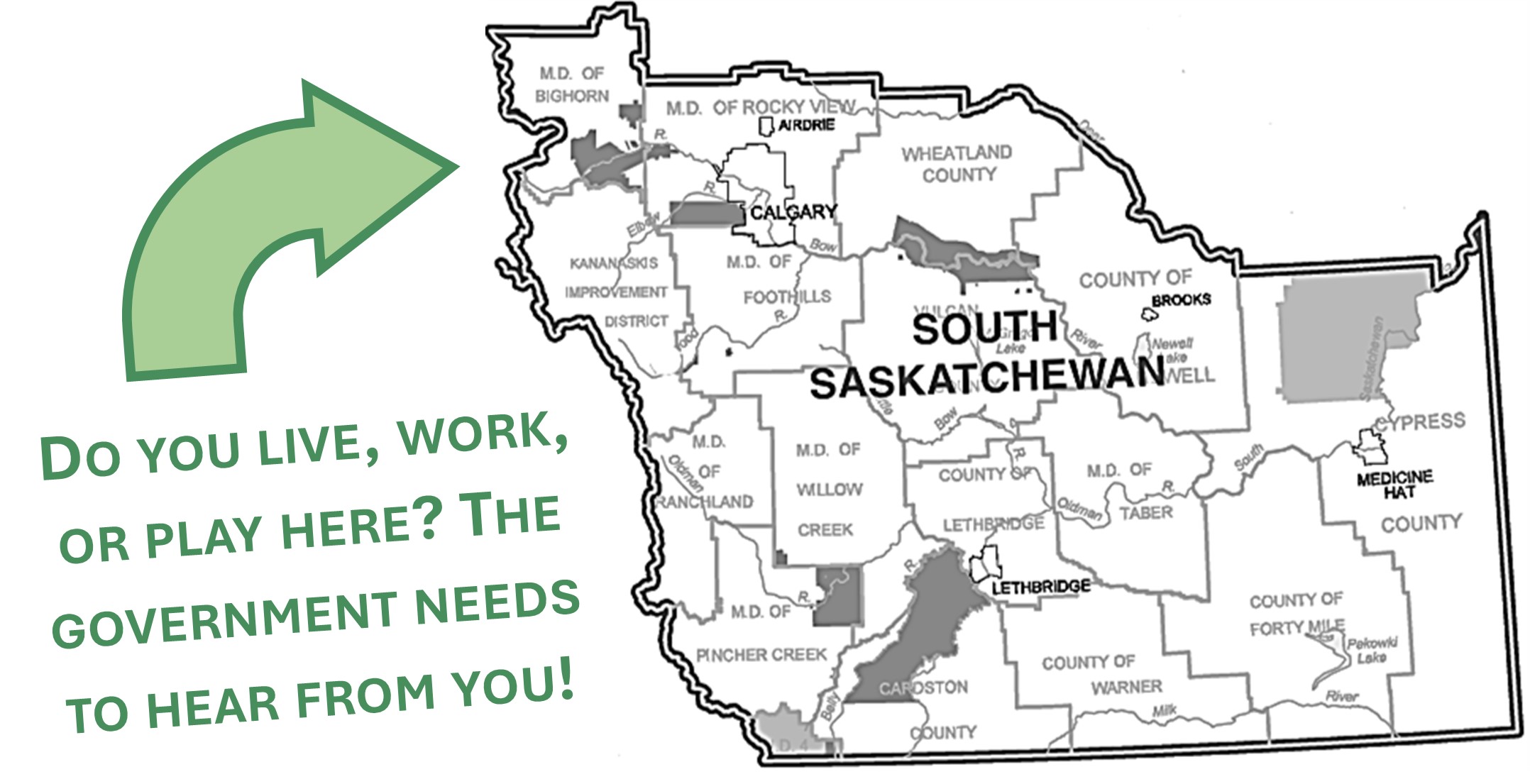
Detailed comments to inform the South Saskatchewan Regional Plan (SSRP) survey
November 25, 2024
- •
- •
- •
The government of Alberta is currently doing their 10-year review of the South Saskatchewan Regional Plan (SSRP). AWA encourages all members to participate in the provincial government’s survey, open until Dec. 6, 2024.
Used to guide sustainable land and water-use, the purpose of the SSRP is to ensure that our communities, industries, and environment are managed in a way that is beneficial to all and viable long-term. After a decade since its implementation, we now have a better idea of the challenges hindering the plan from achieving its full potential, as well as the successes possible when it is effectively utilized.
In correspondence with government employees, AWA has been told that significant public interest is required to convince the minister that updates are necessary. That is where you come in!
The survey has both a short form and long form option; should you fill in the short version, the key thing to emphasize is that the SSRP requires updating to fulfill past promises, tackle existing challenges, and address new pressures (like climate change). Also take the opportunity to mention:
- More components must be made mandatory and binding to ensure compliance.
- Disturbance limits for future development must be established.
- Human footprint must be reduced and consolidated.
- The protection of critical ecosystems and key biodiversity areas must be prioritized.
- The plan must ensure no further loss or damage to headwaters, native grasslands, and wetland habitats.
- The SRRP must address how it will restore and meet the instream flow needs of the region’s rivers.
If you can complete the long version, AWA has created a guide with detailed comments and recommendations to help inform your answers, available here.
| Concern | Action |
| Little within the SSRP is legally binding, which means decision-makers can fail to comply with objectives, and goals can be ignored without consequence. | The SSRP must expand the regulatory and reporting requirements to improve accountability to the plan and outcomes for the environment. |
While the first SSRP was ambitious in its vision, its attempts to balance all interests means it prioritized nothing. This results in aims that are inherently at odds, with contradictions limiting the implementation and efficacy of the plan, ex:
|
Municipalities and industries within the region rely on a robust, resilient environment, who must recognize and stay within its real and often exceeded ecological thresholds. Disturbance limits for development must be set within the SSRP.
|
| As a dry, water-scarce region, the increased protection of water, including aquatic habitat and species must be a top priority. | The conservation of headwaters and Eastern slopes’ ecosystems, as well as restoration of wetlands, riparian areas, and other aquatics habitats and processes downstream is required. |
| The SSRP has many large, water-intensive industries. Maintaining or expanding their use of water at current levels is not sustainable long-term. | Work must be undertaken to reduce diversions and consumption of water from the rivers and tributaries, to restore the instream flows required to maintain healthy ecosystems.
|
| The human footprint in the region is increasing, which results in the continued destruction, degradation, and fragmentation of habitat, wildlife corridors, and ecosystem services. | The SSRP must decrease sprawl, consolidate linear disturbances like roads and transmission lines, promote the co-location of land-uses and increase multi-use zoning, prioritize development on already disturbed sites, and improve ecological connectivity through wildlife friendly infrastructure and expansion of protected areas. |
| “The Government of Alberta is committed to manag[ing] the cumulative effects of development on air, water, land and biodiversity and ensuring the value and benefit of these are sustained at the regional level and contributes to provincial outcomes” but the SSRP does not have cumulative effect frameworks for land or biodiversity. | Total cumulative effect frameworks for land and biodiversity must be implemented with strict and enforceable limits, and the existing frameworks for air and water should be expanded.
|
| Many protected areas promised in the SSRP were never established or expanded. Prairie ecosystems, including native grasslands, continue to be under protected and underrepresented in Alberta’s protected area network. | New and expanded protected areas previously promised must be established, and more identified to achieve ecologically representative and connected protection of biodiversity in Southern Alberta. |
